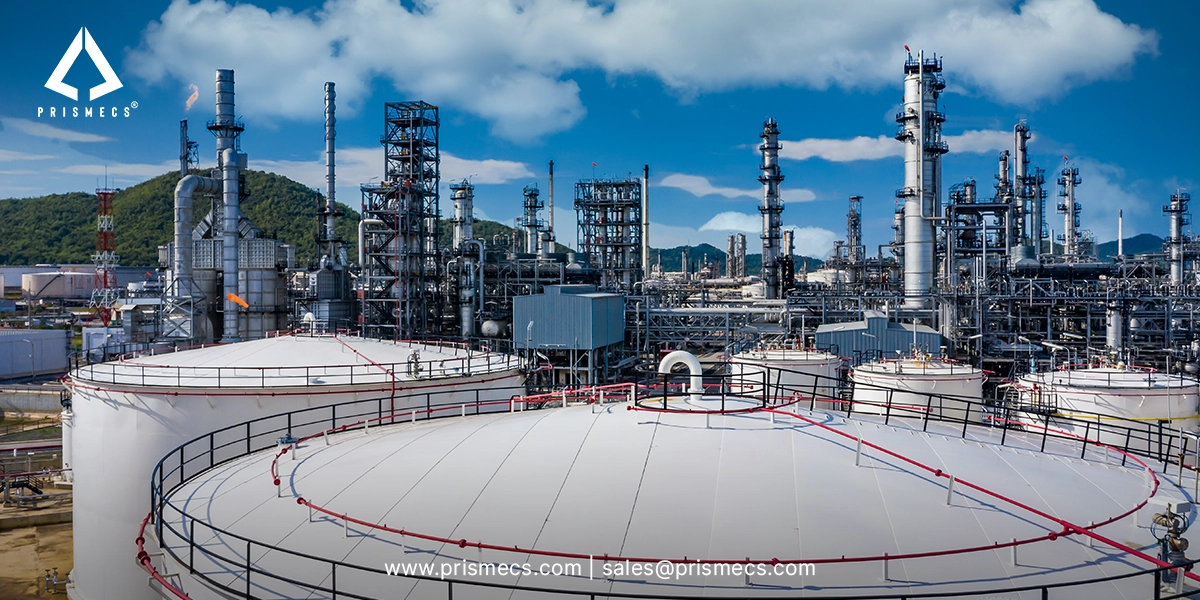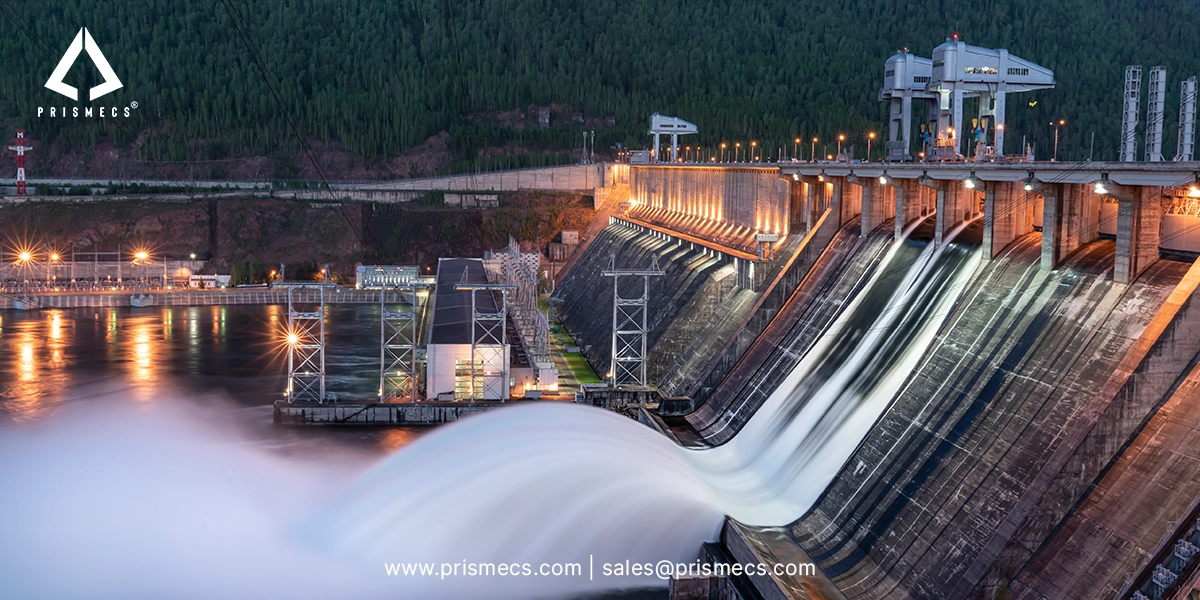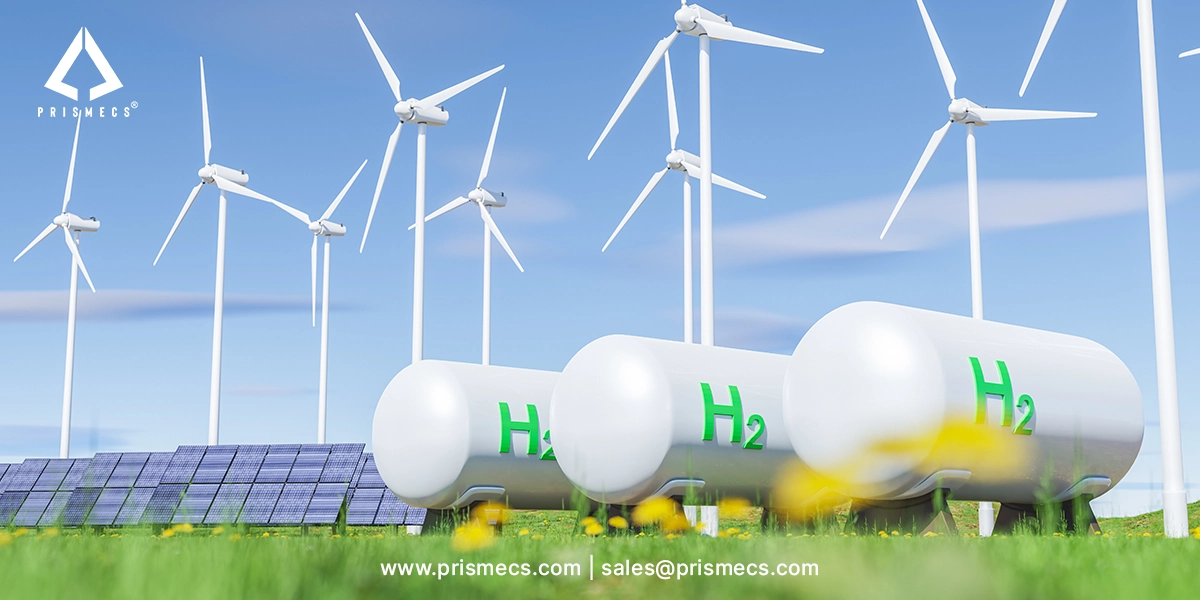
A renewable energy source is a source of energy that never runs out, meaning it can be replenished repeatedly.
Renewable Energy Source
Consistently we depend on energy to give us power, fuel, and heated water for our vehicles. The greater part of this energy comes from petroleum products, like oil, coal, and flammable gas. These are nonrenewable energy sources, and that truly means that assuming we consume every bit of them, they can never be generated during our lifetime.
Non-renewable energy sources additionally contribute enormously to worldwide environmental change by delivering carbon dioxide high up when they are scorched.
Since these fossil fuels cannot be regenerated. We genuinely must begin switching to alternative sources, such as renewable energy sources. These are energy sources that are continually being recharged, like water, sunlight, and wind.
This implies that we can involve them however much we need, and we don’t need to be concerned about them running out. Also, renewable energy sources are normally considerably more harmless to the ecosystem than petroleum products. In general, they do not discharge many chemicals, such as carbon dioxide, that can damage the climate.
At present, a modest amount of all the energy we use comes from renewable energy sources. The question arises here that renewable energy sources can never run out and do not harm the environment, so why are we not using them widely and constantly? The reason is that these renewable energy sources are dependent on conditions.
For instance, utilizing energy from the wind may be incredible in a space that is truly breezy throughout the entire year, however, it wouldn’t function admirably in a space with little wind. So, to install these renewable energy sources one must consider ideal locations where these conditions will stay for a longer period.
If we must install hydropower, it would be in a location where the dam never runs out of water likewise in the case of solar energy it must be installed in an area that is sunny for most of the year so that we can benefit hugely from these renewable energy resources.
What are the top 5 renewable energy sources?
The top 5 renewable energy sources are listed below
- Wind energy
- Solar energy
- Geothermal Energy
- Biomass Energy
- Hydropower
Below is the explanation, working, and advantages of these renewable energy sources.
Wind Energy
Wind energy is exactly what it seems like: Turbines produce the energy by wind. It is a form of solar energy because the winds are generated when the atmosphere is heated up by the sun or rotation of the earth. Windmills have been utilized for many years to siphon water from wells, starting from the earliest stage.
Today, we utilize tall, huge wind turbines that utilize wind energy to produce power. Many wind turbines are frequently positioned together in wind farms (areas) with strong winds.
Working of Wind Energy
Kinetic energy from the wind is collected by wind turbines by using blades. As wind flows over these blades, a lift is created which causes these blades to turn. Electricity is produced by the driveshaft connected to these blades.
Advantages of wind energy
- Wind energy is sustainable
- It is cost effective
- It does not contaminate the environment which means it is a clean energy source
- A domestic source of energy
Hydropower
When water is utilized to create power or electricity, it is called hydropower, or hydroelectric power.
Working of hydropower
Most hydropower plants utilize a dam on a waterway to make a supply to store water. As water is let out of the supply, it courses through a turbine and makes it turn. This actuates a generator that produces power. The energy accessible from the moving water relies on the water stream's volume and the adjustment of the elevation(head) from one point to the next. More water flow and high head leads to more electricity generation. Hydropower is a kind of environmentally friendly power, and when the power plant is built it delivers practically zero waste.
Advantages of Hydropower
- Low Emissions
- Reliable
- Safe
- Hydropower is moderately reasonable
- It leaves no destructive chemical compounds
What is the most useful renewable resource?
Hydropower is the most useful renewable source, with the worldwide hydroelectric introduced limit surpassing 1,340GW, representing over 17% of the world’s all-out introduced power generation limit and over half of the worldwide sustainable power age limit. The biggest hydro generation in the world is owned by China and it also has the world’s largest dam/power plant named Three Gorge dam which has a capacity of 22.5GW. US, Russia Brazil, and Canada also lead in hydropower generation.
Geothermal Energy
Geothermal energy uses the heat caught in the Earth’s center made by the sluggish rot of radioactive particles in rocks at the planet’s focal point. By bore wells, we can carry profoundly warmed water to the surface which can be utilized as an aqueous resource to turn turbines and make power. Pumping steam and high-temperature water once again into the earth can make this renewable energy source greener, accordingly bringing down emissions.
Working of Geothermal Energy
The ground loop is a channeling framework that is covered on the property. It is either a shut circle or an open circle, which opens into a water source close by, like a well or lake. These underground lines are loaded up with a liquid that aids heat trade. The geothermal hotness siphon trades heat between the air and the ground circle framework, extricating heat from the air or the ground circle contingent upon whether warming or cooling is being used.
Advantages of geothermal energy
- Geothermal energy is environment-friendly
- It is sustainable
- It is Reliable
- Both cooling and heating in this form of energy
- No fuel is required in geothermal energy
Biomass Energy
The energy produced or delivered by living or once-living life forms is called Biomass Energy. This is the transformation of strong fuel produced using plant materials into power/electricity. Biomass includes consuming natural materials to deliver power, and these days this is a much cleaner, more energy-effective cycle. By changing rural, modern, and homegrown waste into gas, solid, and liquid fuel, biomass produces power at a much lower financial and ecological expense.
Types of biomasses
- Forest residues
- Solid waste
- Industrial Wastes
- Animal Waste
- Agricultural residue such as straw, leaves, stems, etc
Working of Biomass Energy
For biomass energy to be produced, the organic material must undergo the following steps.
- Bio-digestion
- Combustion
- Fermentation
- Gasification
- Pyrolysis
Bio-digestion
Bio-digestion is the interaction by which without even a trace of air, microbes separate natural material to make biogas, which is changed over into energy.
Combustion
In this cycle, the natural matter is scorched to produce heat, which can be utilized to make power by warming water to create steam. The steam moves the turbine by turning a shaft, which initiates a generator that produces power.
Fermentation
Fermentation is a process in which sugar is converted from natural material into liquor, normally known as ethanol, with the assistance of yeast.
Gasification
In gasification, the natural matter is changed over into carbon monoxide, carbon dioxide, and hydrogen, utilizing heat (without ignition) with a restricted measure of steam or oxygen. The outcome is a gas blend is a structure fuel, called syngas or maker gas, which can be utilized for warming, power generation, and numerous different capacities.
Pyrolysis
Natural material breaks down at high temperatures in pyrolysis without oxygen. Without oxygen, the natural matter doesn’t burn, it separates into a fluid called bio-oil, syngas, or a solid.
Advantages of Biomass Energy
- It is carbon-impartial
- It lessens the overreliance on petroleum products
- Biomass is generally and broadly accessible as a renewable source of energy.
- It is more affordable than petroleum derivatives.
- Biomass creation adds an income hotspot for producers
- Less trash in landfills
Solar Energy
Solar energy is light and hotness from the Sun that is tackled utilizing a scope of innovations, for example, solar ability to create power/electricity, and solar thermal power. Sun is used as a source of energy as the rays of the sun fall onto solar panels, they convert them into usable energy which is then sent to power grids so that it can be used for a large number of operations.
Types of solar energy frameworks
Solar energy frameworks use radiation from the sun to deliver power and heat. There are three essential classes of solar energy frameworks:
- Solar thermal frameworks utilize solar collectors to assimilate solar radiation to warm air or water for water warming and space heating purposes.
- Concentrating solar collectors are used by solar thermal power plants to concentrate the sun’s beams to warm a liquid to a high temperature. This liquid creates steam to control a turbine and a generator.
- Photovoltaic (PV) frameworks utilize solar electric cells that convert solar radiation straightforwardly into power. Individual PV cells are organized into modules (boards) of fluctuating power-creating limits. PV frameworks range from single PV cells for fueling and adding machines to huge power plants with many modules to produce a lot of power.
Working of Solar Energy
An electric field is generated when sunlight reaches the solar panels. Electricity is generated by this process which is then moved to a conductive wire through the panel's edge.
The conductive wire carries the power to the inverter, where it is changed from DC power to AC, which is utilized for power purposes. One more wire moves the AC power from the inverter to the breaker box, which disperses the power to the required areas. Any power not required moves through the utility meter and into the power grid.
Advantages of solar energy
- Solar Energy does not produce greenhouse gases
- Free energy-only installation expense
- It can be produced on or off the grid
- Solar energy is sustainable
- Solar panels do not produce noise
- Suitable for remote areas where energy grids are not connected
What is the fastest-growing renewable energy source?
The yearly development pace of solar energy has averaged nearly 25% during the most recent years, which makes solar energy the fastest-growing renewable energy source.
Battery energy storage system (BESS)
BESS are gadgets that store energy from renewables, such as wind and solar, and afterward deliver this stored energy when clients need power the most.
Battery storage innovations are vital for accelerating the supplanting of petroleum products with renewable energy. Battery energy storage systems are an inexorably urgent part of efficient renewable energy supplies and power demands. Lithium batteries, which are utilized in cell phones and electric vehicles, are right now the prevailing storage innovation for enormous-scope plants to assist power networks with guaranteeing a dependable stockpile of renewable energy.
Working of Battery energy storage systems
BESS is significantly further developed than the batteries we have in our kitchen cabinet or the ones in kids’ toys. It can be charged by the power created from renewable energy, like wind and solar power. Smart battery programming utilizes calculations to facilitate energy creation and automated control systems are utilized to choose when to keep stored energy or deliver it to the power grid. Electricity is set free from the BESS when there is high demand for minimizing expenses and to keep the electricity flowing.
Why are Battery energy storage systems important?
Battery storage innovation has a vital part to play in guaranteeing homes and organizations can be fueled by efficient power energy in any event, when the sun isn’t sparkling, or the breeze has quit blowing.
For instance, the UK has the biggest introduced limit of offshore wind on the planet, yet the capacity to catch this energy and intentionally send it can expand the worth of this renewable energy by expanding production and conceivably decreasing expenses.
What is Crypto Mining?
Crypto mining is a process in which new units of cryptocurrency are made and then brought to the market.
Cryptocurrency miners engage to solve incredibly complex numerical problems, to effectively add a unit. This whole process requires the utilization of costly PCs and huge amounts of power.
For Crypto mining, there is an arrangement of hardware components like ASIC, CPU, and FPGA which is also known as a mining rig.
These rigs consume larger amounts of electricity or power to run. The power can be from fossil fuels or renewable sources.
Can you use Renewable energy for crypto mining?
Yes, we can use renewable energy for crypto mining. Crypto miners are drawn to sources with incredibly low expenses of energy, which frequently are wind energy, hydropower energy, geothermal energy, and solar energy.
Crypto mining activities are in this manner much of the time attached to renewable sources, especially in areas like New York and Texas.
When a wind or solar project becomes functional, assistant bitcoin mining activities can be housed either on location or close by location. The energy that can’t be offered to the power grid can be directed to a location with crypto-mining activity.
Power generation that would somehow increase congestion in the power grid can turn into a second source of benefit for power grid makers.
This other income source additionally makes a cost floor, giving energy suppliers expanded bartering power with purchasers. On the off chance that utilities demand charging extraordinarily low rates, energy undertakings could go to minimal expense cryptocurrency mining for benefit.
More development builds admittance to nonstop power from renewable sources and a more noteworthy stockpile of renewable energy further speeds up the progress to a savvy power grid-based energy dissemination network in the US. A brilliant power grid system further addresses the effect renewable energy can have through both ecological and monetary channels. As the issues of transmission and congestion of power grid costs die down.
Mining Bitcoin with Solar Energy
Utilizing solar energy to mine Bitcoin is progressively famous attributable to the energy-escalated nature of the crypto mining solutions. Moreover, many have recommended that renewable energy sources like solar will be critical to proceeding with the plausibility of mining cryptocurrencies like Bitcoin because the current fossil fuel byproducts coming about because of crypto mining aren’t reasonably pushing ahead.
Considering these issues, working expenses on an individual level and carbon impression on a worldwide scale- utilizing solar energy to control cryptocurrency mining seems OK for all gatherings included. On top of this, carrying out battery storage close to a solar power system can give another degree of independence and energy freedom for crypto miners.
The amount of Solar Energy Is Needed to Mine Bitcoin?
If we live in a radiant area in the US, we can deliver around 230 watts per square meter of solar panels every day.
Bitcoin mining rigs will require around 400 to 450 watts, however, to make money from the mining system. You’ll probably have to run various GPUs and, accordingly, require someplace in the locale of 1000 to 1400 watts each day.
To meet these requirements, we would require somewhere in the range of 3 and 4 square meters of solar panels to run a mining rig properly, or 4 to 6 square meters of solar panels to run a rig that has many GPUs.
Mining bitcoin with solar energy is positively conceivable, yet not modest.
How many solar panels you will require depends upon where you are based, and how much power your Crypto mining rig needs to run.
Wind energy for Crypto mining?
Indeed, we can use wind energy for crypto mining. Quite possibly the most well-known method for power generation, as wind energy converts energy from kinetic to mechanical energy.
The wind is additionally determined by direct daylight and is utilized to decrease ozone-harming substance outflows in mines. The energy delivered can be used to send power across the power grids for crypto-mining purposes.
How are renewables helping in crypto mining operations?
The most important advantage of crypto mining via renewables is the unlimited availability of these sources. Fossil fuels can run out soon after 2050 while renewable sources will be there for a lifetime.
As crypto mining will continue for larger amounts of time, the crypto miners must rely on sources. Which are sustainable like Hydropower Energy, Solar Energy, Wind Energy, or Geothermal Energy.
These sources will be available if the earth sustains. Efficient use of energy is another advantage of renewable energy as it saves the climate. No pollution or harmful gases are emitted which leads to clean crypto mining without damaging the environment.
Another major advantage of using renewable sources is that they are cost-effective. Like once a system is installed like a solar system there will be initial costs, others will be just maintenance costs. It also leads to stability of price as fossil fuels can rise in price over time, but these systems will be there always.
Over time the price of natural energy sources has declined as the global production output is increasing. As a result, Renewable sources have accomplished more productivity, higher efficiency, and a good economy.
The crypto mining industry can depend 100 percent on renewable energy. So, the mining business isn’t going about as a detour here. All things being equal, it is impelling the worldwide environmentally friendly renewable energy economy fundamentally.
How Prismecs is helping the mining industry with renewable energy?
Prismecs believes that renewable energy is the future of power generation and crypto mining. Because renewable energy sources are smarter sources of energy than fossil fuels. We aim to provide reliability in our renewable energy services. We offer a complete package for renewable energy sources to industries as a leading provider of industrial equipment. Prismecs has created great value for customers by not only providing the best turnkey solutions but also lifetime support. Prismecs is an ideal choice for small and large industries looking for power generation and crypto mining with renewable energy. Contact us for more details and queries about our services.
Tags: Crypto Mining Industry
recent posts

Petrochemicals
6 minutes read
Petrochemical EPC Services for Complex Plant Projects
Petrochemical EPC services are designed to manage complex plant projects, brownfield integration, strict regulations, and tight schedules.

Renewables
5 minutes read
How Renewable Energy Systems Work Efficiently
Discover how renewable energy systems work efficiently to provide affordable, zero carbon energy, overcome storage challenges, and power for a sustain...

I and C Services
7 minutes read
Expert Commissioning Services for Safe, Efficient Operations
Learn how expert commissioning services support safe, efficient, and reliable energy operations across complex industrial and power systems.

Green Hydrogen
7 minutes read
Green Hydrogen Plant Technology Guide
Discover how a green hydrogen plant works, its key technologies, and its role in clean energy. Explore solutions for scalable, carbon-free hydrogen pr...